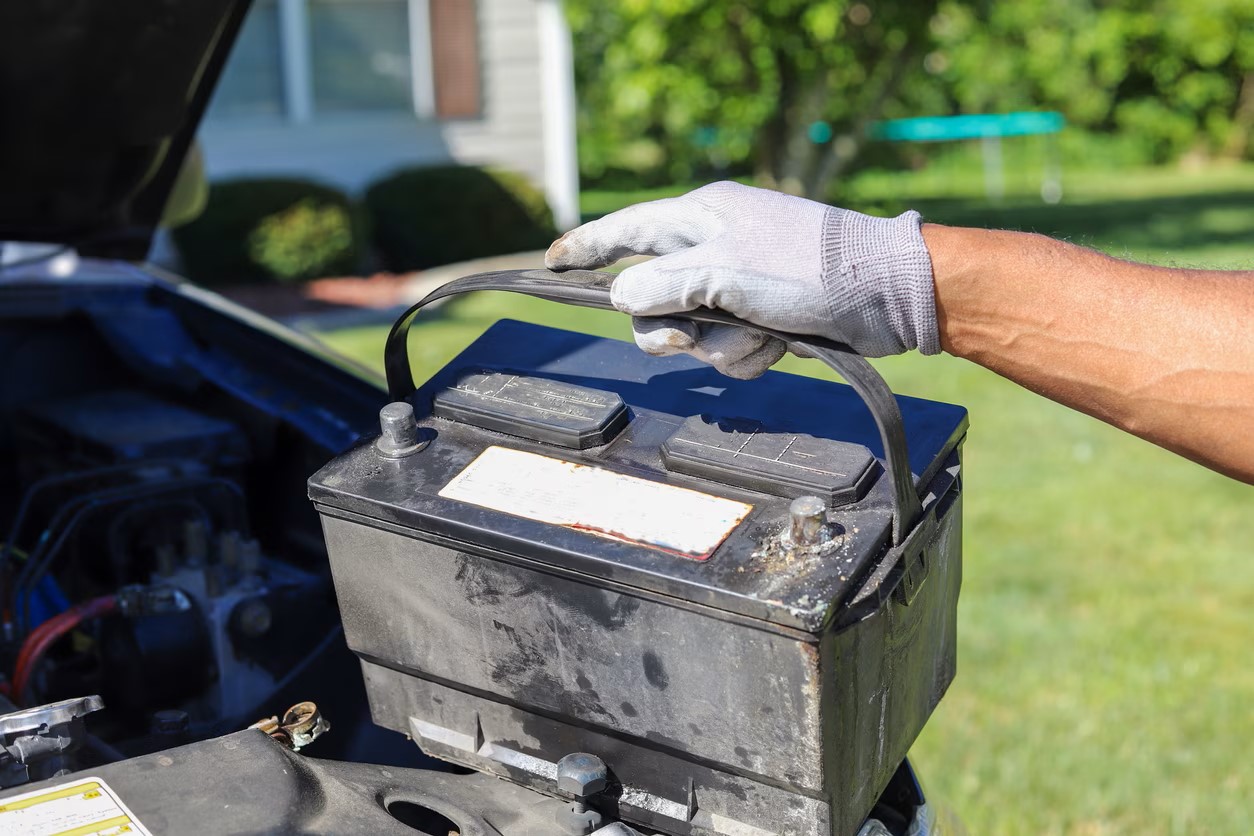

Articles
How To Store Car Batteries
Modified: January 6, 2024
Looking for articles on how to store car batteries? Find helpful tips and guidelines to ensure your car battery stays in great condition when not in use.
(Many of the links in this article redirect to a specific reviewed product. Your purchase of these products through affiliate links helps to generate commission for Storables.com, at no extra cost. Learn more)
Introduction
Proper car battery storage is essential to ensure the longevity and performance of your vehicle’s battery. Whether you need to store a spare battery during the winter months or keep an extra battery on hand for emergencies, following the correct storage procedures will help prolong the lifespan of the battery and prevent damage.
The importance of proper car battery storage cannot be overstated. Improper storage can lead to a decrease in battery capacity, reduced performance, and even permanent damage. By taking the time to prepare, store, and maintain your car battery correctly, you can extend its lifespan and save yourself from the hassle and expense of premature battery replacement.
In this article, we will explore the steps involved in storing a car battery properly. From preparing the battery for storage to choosing the right location and implementing safety measures, we will cover all the essential guidelines you need to follow.
Key Takeaways:
- Proper car battery storage is crucial for maintaining longevity, performance, and safety. Follow the comprehensive guide to prepare, store, and maintain your battery, ensuring it remains in optimal condition and ready for reliable use when needed.
- Prioritize safety when handling car batteries. Wear protective gear, work in well-ventilated areas, and follow proper handling techniques to prevent accidents and ensure a safe and secure battery handling experience.
Read more: How To Store Car Battery
Importance of Proper Car Battery Storage
Proper car battery storage is crucial for several reasons. Firstly, storing the battery correctly ensures its longevity and performance. Batteries that are stored inappropriately may lose their charge over time, leading to decreased capacity and reduced ability to start your vehicle. By following proper storage procedures, you can maintain the battery’s charge and prevent deterioration.
Secondly, storing the battery correctly helps protect it from damage. Extreme temperatures, excessive moisture, and exposure to corrosive materials can all harm the battery. By choosing the right storage location and implementing safety measures, you can shield the battery from these potential hazards.
Proper storage also plays a significant role in preventing potential accidents or injuries. Improperly stored batteries may leak or emit harmful gases, posing a risk to both the vehicle and individuals. By taking the necessary precautions and following the correct storage protocols, you can minimize the chances of accidents or injuries occurring.
Furthermore, proper car battery storage allows for easy maintenance and inspection. When the battery is stored in a clean and organized manner, it becomes much simpler to conduct regular checks for any signs of damage or deterioration. This enables you to address any issues promptly and take necessary action, such as replacing the battery if needed.
Lastly, storing the battery properly ensures that it is readily available when needed. Whether you need a spare battery for emergencies or plan to store your vehicle for an extended period, having a well-preserved battery ensures that your vehicle is always ready to start when you require it.
In summary, proper car battery storage is vital for maintaining the battery’s longevity, performance, and safety. By following the correct procedures, you can prevent damage, prolong the battery’s lifespan, and ensure that it is always available when needed.
Preparing the Battery for Storage
Before storing your car battery, it’s important to properly prepare it to ensure optimal conditions for storage. Here are the steps to follow when preparing your battery for storage:
- Clean the battery: Start by cleaning the surface of the battery to remove any dirt, grease, or corrosion. Use a mixture of baking soda and water or a specialized battery cleaning solution. Scrub gently with a brush to ensure all surfaces are clean.
- Inspect for damage: Carefully inspect the battery for any signs of damage, such as cracks, leakage, or bulging. If you notice any damage, it’s best to replace the battery rather than storing it.
- Disconnect the battery: Next, disconnect the battery cables, starting with the negative (-) cable followed by the positive (+) cable. Use a wrench or pliers to loosen and remove the cable connections. Be cautious and ensure that the metal parts of the cables do not come into contact with each other or any metal surfaces.
- Remove accessories: If your battery has any additional accessories or attachments, such as terminals or wiring harnesses, remove them before storage. This will help prevent any potential damage or corrosion during the storage period.
- Charge the battery: If the battery charge is low, it’s recommended to recharge it before storage. Use a battery charger with a trickle charge feature to slowly and safely bring the battery to a full charge. Avoid overcharging the battery, as this can lead to damage.
- Perform a final inspection: After cleaning and disconnecting the battery, perform a final inspection to ensure everything is in order. Check for any loose connections, signs of corrosion, or other issues. Address any problems before moving on to the storage stage.
By taking the time to properly prepare your car battery for storage, you can ensure that it remains in good condition and is ready for use when needed. This process helps prevent damage, corrosion, and other issues that can arise during storage.
Choosing the Right Storage Location
When it comes to storing your car battery, selecting the right storage location is crucial to ensure its safety and longevity. Here are some factors to consider when choosing the ideal storage spot:
- Avoid extreme temperatures: Extreme heat or cold can have a negative impact on the battery’s performance and lifespan. It’s best to store the battery in a location where temperatures are moderate and stable. Avoid storing it in areas exposed to direct sunlight or near sources of heat.
- Keep away from moisture: Moisture can cause corrosion and other damage to the battery. Choose a dry storage location to prevent water or humidity from affecting the battery. Avoid basements, damp garages, or areas prone to condensation.
- Minimize exposure to sunlight: Prolonged exposure to direct sunlight can lead to overheating and damage to the battery. Choose a storage spot that is shaded and away from direct sunlight to protect the battery from excessive heat.
- Avoid corrosive materials: Store the battery away from any corrosive substances, such as cleaning chemicals or solvents. These materials can damage the battery and cause leaks or other issues.
- Choose a well-ventilated area: Proper ventilation is essential to prevent the buildup of potentially harmful gases that batteries can emit during storage. Select a well-ventilated area, preferably with good air circulation, to ensure the safe storage of the battery.
- Select a stable and secure location: Make sure the storage location is stable and secure to prevent accidental damage or unwanted movement of the battery. Avoid areas where the battery could be knocked over or exposed to vibrations.
- Consider accessibility: If you plan to store the battery for an extended period, consider choosing a location that is easily accessible for regular maintenance checks and inspections.
By taking these factors into account, you can choose a storage location that provides optimal conditions for your car battery. This will ensure the battery remains safe and well-preserved during the storage period, ultimately prolonging its lifespan.
Cleaning the Battery
Keeping your car battery clean is an important step in ensuring its proper functioning and prolonging its lifespan. Here are the steps to follow when cleaning your battery:
- Gather the necessary materials: Before you begin, gather the materials you’ll need, including a mixture of baking soda and water or a specialized battery cleaning solution, a clean cloth or brush, and gloves to protect your hands.
- Ensure safety: Before starting, make sure to take proper safety precautions. Put on gloves and eye protection to protect yourself from any potential harm.
- Remove any dirt or debris: Use a dry cloth or brush to wipe away any loose dirt or debris from the battery’s exterior. This will help prevent any additional dirt from mixing with the cleaning solution.
- Prepare the cleaning solution: If using a baking soda and water mixture, mix one tablespoon of baking soda with one cup of water in a clean container. Stir until the baking soda dissolves. If using a specialized battery cleaning solution, follow the instructions provided.
- Apply the cleaning solution: Dip a cloth or brush in the cleaning solution and gently scrub the battery’s terminals, clamps, and surrounding areas. Pay attention to any areas with visible corrosion or buildup. The cleaning solution will help remove any acid or dirt deposits present.
- Rinse with water: Once you have cleaned the battery, rinse off any residue with clean water. Use a damp cloth or sponge to wipe away any remaining cleaning solution.
- Dry the battery: After rinsing, use a clean, dry cloth or towel to thoroughly dry the battery and its components. Make sure there is no moisture left on the battery, as this can lead to corrosion.
- Inspect for corrosion: Take a close look at the battery terminals and clamps for any signs of corrosion. If you notice any corroded areas, use a battery terminal cleaner or a mixture of baking soda and water to remove the corrosion. Scrub gently until the corrosion is gone.
Regularly cleaning your battery ensures that it remains free from dirt, corrosion, and other contaminants that can impede its performance. By following these simple steps, you can maintain a clean and well-maintained battery, maximizing its efficiency and extending its lifespan.
Read more: How To Store A Car Battery
Disconnecting the Battery
Disconnecting the car battery is a crucial step in the storage process to prevent any drain on the battery and ensure its longevity. Here’s a step-by-step guide on how to disconnect your car battery properly:
- Gather the necessary tools: Before you begin, gather the tools you’ll need, such as a wrench or pliers, to loosen and remove the battery cables.
- Identify the positive and negative terminals: Locate the positive (+) and negative (-) terminals on the battery. The positive terminal is usually marked with a plus sign, while the negative terminal is marked with a minus sign.
- Start with the negative cable: Begin by disconnecting the negative cable. Use a wrench or pliers to loosen the nut or bolt holding the cable in place. Once loose, carefully remove the cable from the negative terminal. Place the cable away from the battery to avoid accidental contact.
- Move on to the positive cable: After disconnecting the negative cable, proceed to disconnect the positive cable in the same manner. Loosen the nut or bolt holding the cable and remove it from the positive terminal. Keep the positive cable separate from the battery and the negative cable.
- Inspect the cables: Take a moment to inspect the battery cables for any signs of damage, corrosion, or loose connections. If you notice any issues, address them before storing the battery.
- Secure the disconnected cables: To prevent the disconnected cables from accidentally coming into contact with each other or the battery terminals, secure them using insulated tape or store them in a separate location.
By following these steps, you can safely disconnect your car battery and prevent any unnecessary discharge or electrical issues during storage. Properly disconnected and secured cables ensure that the battery remains in optimal condition, ready to be reinstalled when needed.
When storing car batteries, it’s important to keep them in a cool, dry place away from direct sunlight. It’s also a good idea to periodically check the battery’s charge and top it off if necessary to prevent it from losing power.
Maintaining the Battery
Maintaining your car battery during storage is essential to ensure its longevity and optimal performance. By implementing a few simple maintenance practices, you can help keep your battery in good condition. Here’s what you need to do:
- Regularly check the battery: During the storage period, periodically inspect the battery for any signs of damage, leakage, or corrosion. Look for cracks, bulges, or any other abnormalities. If you notice any issues, address them promptly to prevent further damage.
- Keep the battery clean: Clean the battery periodically to remove any dirt, dust, or debris that may have accumulated. Use a soft cloth or brush to gently wipe the surface of the battery and its terminals. Keeping the battery clean helps prevent corrosion and ensures proper electrical conductivity.
- Charge the battery as needed: If you have a maintenance-free battery or a sealed battery, you may not need to worry about recharging it during storage. However, if you have a traditional lead-acid battery, it may gradually lose its charge over time. In such cases, use a battery charger with a trickle charge feature to maintain an optimal charge level.
- Monitor the battery voltage: Use a voltmeter to periodically check the battery voltage. A fully charged battery should have a voltage reading between 12.4 and 12.7 volts. If the voltage drops below this range, it may indicate a problem with the battery’s charge or condition, and further investigation may be needed.
- Rotate the battery: If feasible, periodically rotate the battery to prevent it from sitting in one position for an extended period. This helps avoid potential damage from prolonged pressure on a specific area of the battery.
- Inspect the storage area: Regularly inspect the storage area for any signs of moisture, excessive heat, or other environmental hazards that may impact the battery’s condition. Address any issues promptly to maintain a safe and suitable storage environment.
- Avoid deep discharges: If you plan to use the battery periodically during storage, avoid fully discharging it. Deep discharges can shorten the battery’s lifespan. Instead, recharge the battery partially after each use to maintain its charge level.
By following these maintenance practices, you can help ensure that your car battery remains in good condition during storage. Regular inspections, cleanliness, and monitoring of charge levels will contribute to a healthy battery that is ready for use when needed.
Storing the Battery
Proper storage of your car battery is essential to maintain its performance and longevity. By following these steps, you can ensure that your battery remains in good condition throughout the storage period:
- Choose a suitable container: Place your battery in a sturdy and secure container that provides ample protection from external elements. It should be non-conductive and resist moisture, corrosion, and temperature fluctuations.
- Store the battery in a cool, dry place: Find a cool and dry location to store the battery. Extreme temperatures can negatively impact the battery’s performance and lifespan. Avoid areas with high humidity or excessive heat.
- Avoid direct contact with concrete: Place a wooden or plastic board underneath the battery to prevent direct contact with concrete floors. Concrete can draw moisture from the battery and potentially lead to corrosion.
- Protect the terminals: To prevent any potential discharge or corrosion, cover the battery terminals with terminal protectors or a layer of petroleum jelly. This helps maintain the terminals’ integrity and prevents the buildup of dirt or moisture.
- Store the battery in an upright position: Always store the battery in an upright position to avoid any potential leakage. This ensures that the electrolyte inside the battery remains in the proper position and does not spill or cause damage.
- Keep the battery away from flammable materials: Store the battery away from any flammable materials or substances, such as gasoline, oil, or solvents. This reduces the risk of fire or chemical reactions.
- Check the charge periodically: During storage, periodically check the battery’s charge level. If it drops significantly, consider recharging it to maintain its optimal charge and prevent deep discharges.
- Follow manufacturer’s guidelines: Always refer to the manufacturer’s instructions for specific storage recommendations and guidelines. Different battery types may have slightly different storage requirements.
By following these storage practices, you can ensure that your car battery remains in a safe and well-preserved condition throughout the storage period. Proper storage plays a crucial role in maintaining the battery’s performance and extending its overall lifespan.
Reinstalling the Battery
When it’s time to reinstall your car battery after a period of storage, it’s important to follow the proper steps to ensure its safe and correct installation. Here’s a step-by-step guide to help you reinstall your battery:
- Inspect the battery: Before reinstalling, inspect the battery for any signs of damage, corrosion, or leakage. If you notice any issues, address them accordingly. It’s also a good idea to clean the battery terminals if there is any visible buildup.
- Prepare the battery cables: Clean the battery cable ends if necessary and ensure they are free from any dirt or corrosion. If needed, apply a thin layer of dielectric grease to the terminals to help prevent corrosion and aid in electrical conductivity.
- Position the battery: Carefully position the battery back into its original location, ensuring that it sits securely and does not move or wobble. Make sure to align the positive (+) and negative (-) terminals correctly.
- Connect the positive cable: Begin by connecting the positive cable (typically red) to the positive terminal on the battery. Use a wrench or pliers to secure the cable connection, ensuring it is tight but not over-tightened.
- Connect the negative cable: Next, connect the negative cable (typically black) to the negative terminal on the battery. Again, use a wrench or pliers to secure the cable connection properly.
- Double-check the connections: Once both cables are connected, double-check that they are securely fastened and free from any looseness. Ensure that there is no contact between the positive and negative terminals or with any metal surfaces.
- Inspect for proper installation: Take a moment to visually inspect the battery and surrounding area to ensure there are no loose components or wiring that could interfere with the battery’s operation.
- Test the battery: Start your vehicle and let it run for a few minutes to ensure that the battery is functioning properly. Check for any warning lights or abnormal operation, which may indicate an issue with the battery or its installation.
By following these steps, you can safely and correctly reinstall your car battery after a period of storage. Proper installation ensures that the battery is securely connected and ready to provide power to your vehicle’s electrical system.
Read more: How To Store A Car Battery Indoors
Precautions and Safety Measures
When dealing with car batteries, it’s important to take precautions and follow safety measures to protect yourself and prevent accidents. Here are some key precautions to keep in mind:
- Wear protective gear: When handling the battery, always wear protective gloves and safety goggles to protect your hands and eyes from chemicals, acid, and debris.
- Avoid smoking or open flames: Batteries emit flammable and explosive gases. Always keep any open flames, sparks, or smoking materials away from the battery storage area.
- Work in a well-ventilated area: When cleaning, disconnecting, or working with the battery, ensure you are in a well-ventilated area to avoid inhaling potentially harmful gases.
- Follow proper handling techniques: Lift and carry the battery with care, using proper lifting techniques. Batteries can be heavy, so it’s important to avoid straining yourself or dropping the battery.
- Avoid short circuits: Ensure that your tools, jewelry, and other objects do not come into contact with both the positive and negative terminals simultaneously, as this can cause a short circuit and potential injury.
- Dispose of old batteries properly: If you are replacing an old battery, make sure to dispose of it according to the proper recycling and disposal guidelines in your area. Old batteries contain hazardous materials and should not be thrown in the regular trash.
- Refer to the vehicle manual: Consult your vehicle owner’s manual for specific safety precautions and instructions related to your vehicle’s battery. Different vehicles may have different requirements and recommendations.
- Keep batteries out of reach of children and pets: Store and handle batteries in a location that is inaccessible to children and pets to prevent potential accidents or exposure to harmful substances.
- Seek professional help if unsure: If you are unsure about any aspect of battery storage, cleaning, or installation, it’s advisable to seek the assistance of a professional mechanic or technician to ensure proper handling.
By following these safety measures and taking the necessary precautions, you can ensure a safe and secure battery handling experience. It’s important to prioritize safety not only for your well-being but also to prevent damage to the battery and minimize the risk of accidents.
Conclusion
Proper car battery storage is crucial for maintaining the longevity, performance, and safety of your vehicle’s battery. By following the correct procedures for preparing, storing, and maintaining your battery, you can ensure that it remains in optimal condition and ready for reliable use when needed.
Throughout this article, we have explored the importance of proper car battery storage and provided a comprehensive guide to help you through each step of the process. From cleaning the battery and disconnecting it to choosing the right storage location and reinstalling it, we have covered all the essential aspects of battery storage.
Remember to take the necessary precautions and follow the recommended safety measures when handling batteries. Always wear protective gear, work in a well-ventilated area, and avoid open flames or sparks to ensure your safety.
By properly preparing the battery for storage, cleaning it thoroughly, disconnecting it to avoid any drain, and storing it in a suitable location, you can protect the battery from damage and extend its lifespan. Regular maintenance checks and monitoring the battery’s charge level are also important for ensuring its optimal performance.
When it’s time to reinstall the battery, make sure to follow the correct steps and check for any warning signs or abnormal operation. Taking the time to reinstall the battery properly ensures that it is securely connected and ready to provide the necessary power to your vehicle.
In conclusion, by implementing the guidelines outlined in this article, you can ensure the proper storage and maintenance of your car battery. By doing so, you will prolong its lifespan, maintain its performance, and save yourself from the inconvenience and expense of premature battery replacement.
Frequently Asked Questions about How To Store Car Batteries
Was this page helpful?
At Storables.com, we guarantee accurate and reliable information. Our content, validated by Expert Board Contributors, is crafted following stringent Editorial Policies. We're committed to providing you with well-researched, expert-backed insights for all your informational needs.
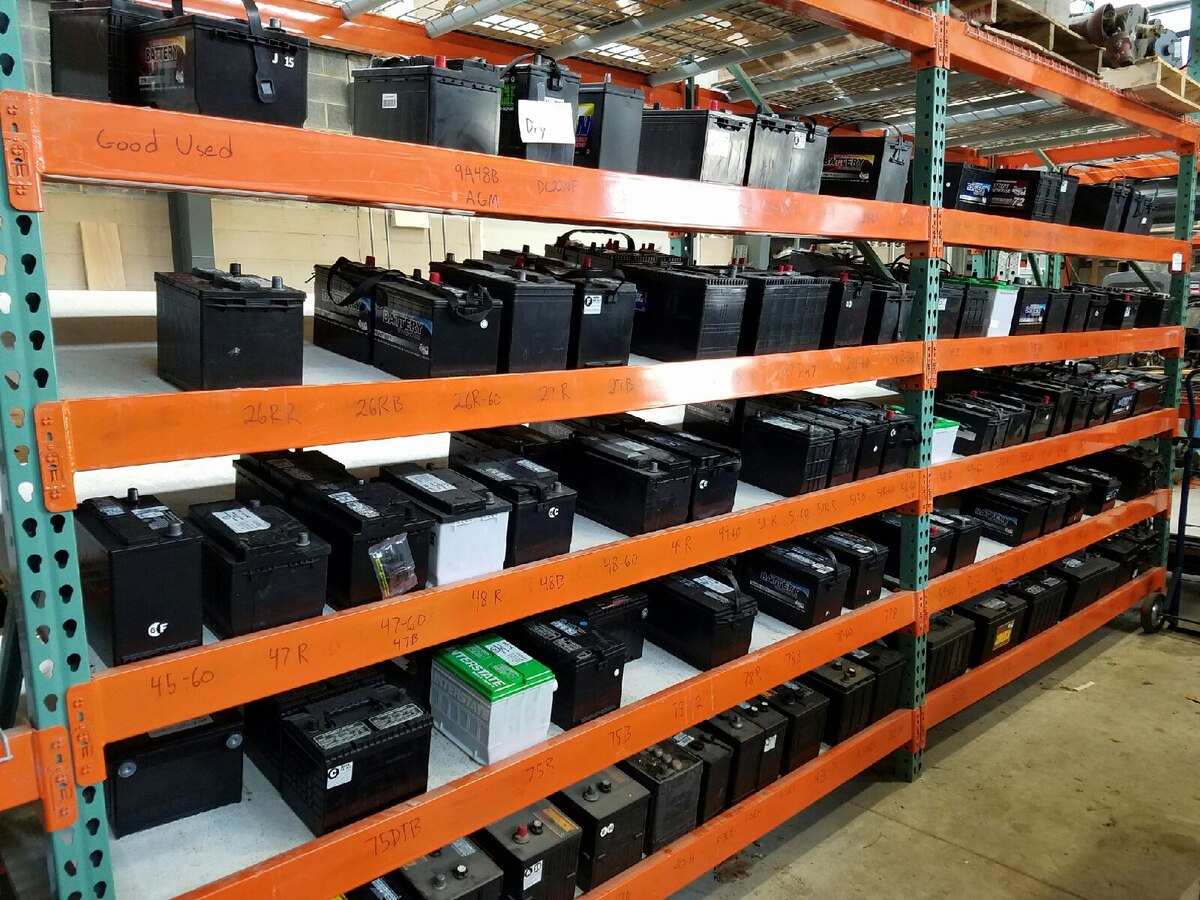
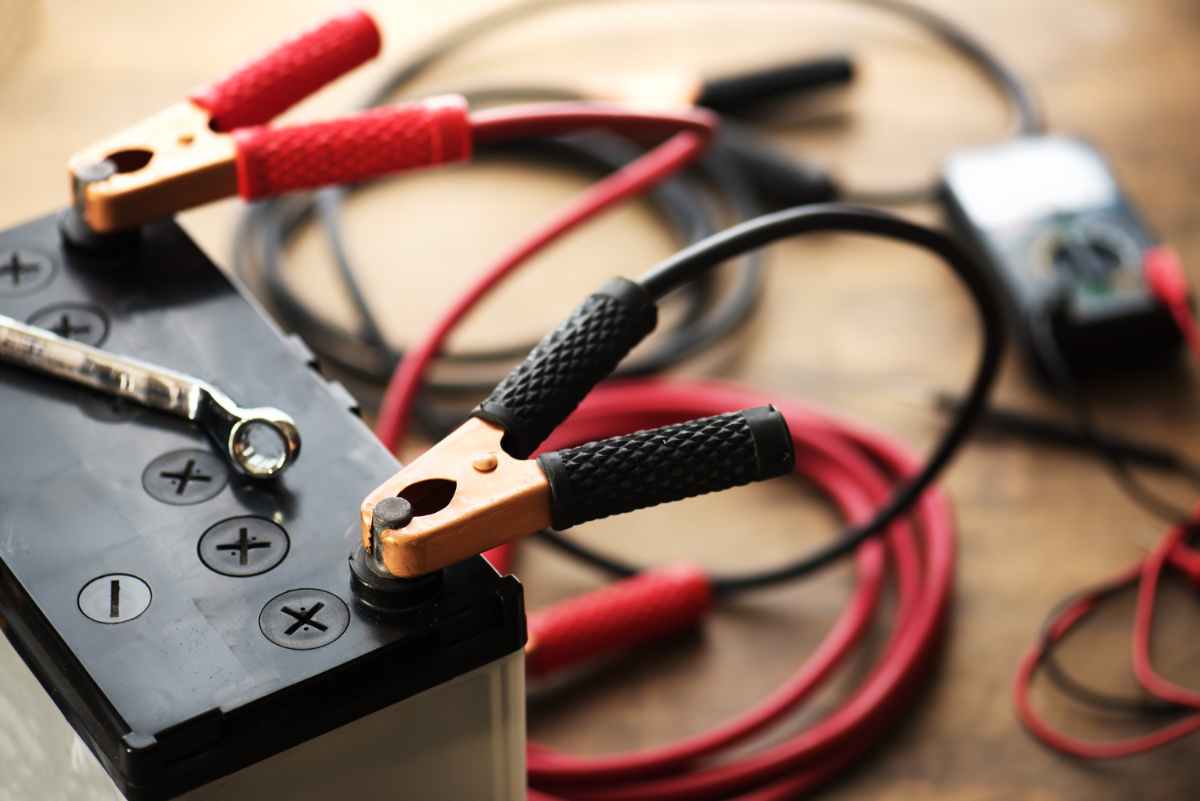

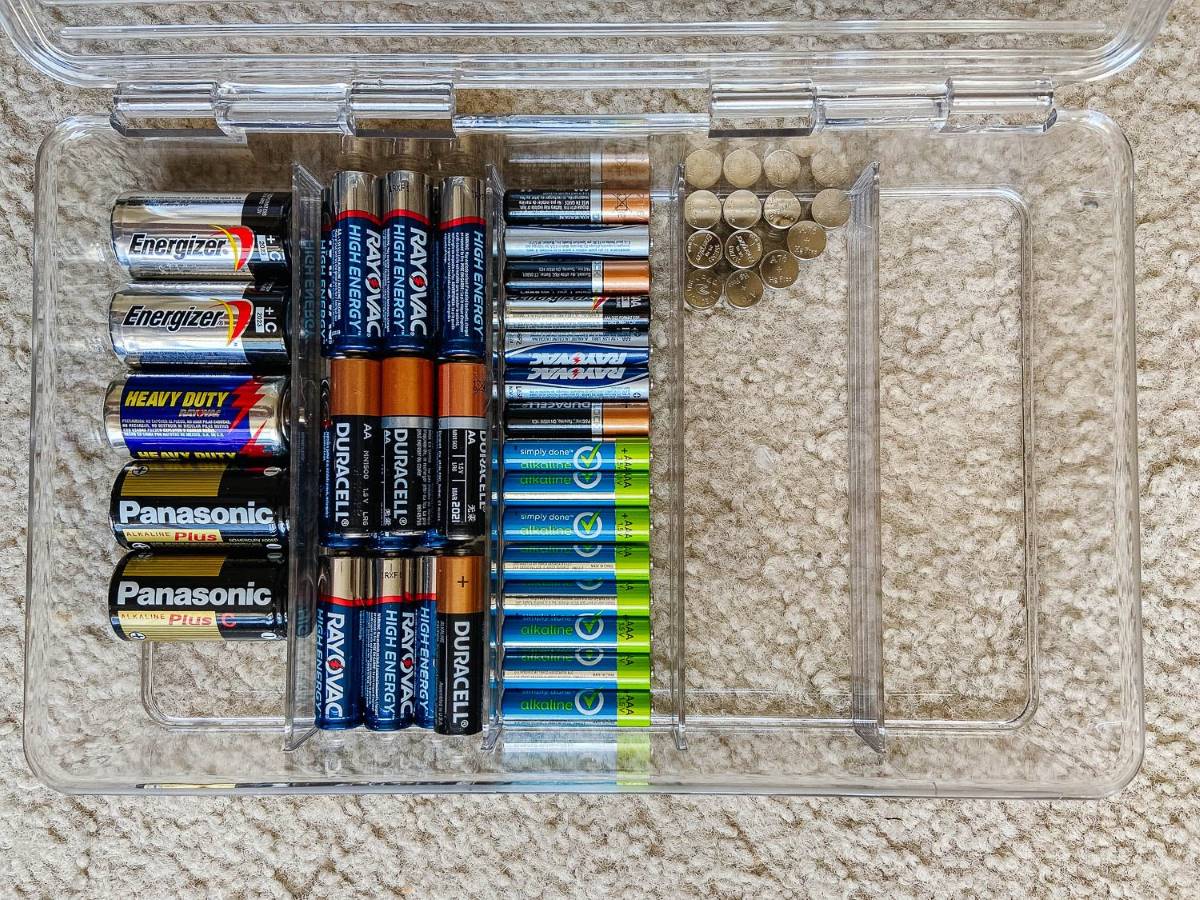
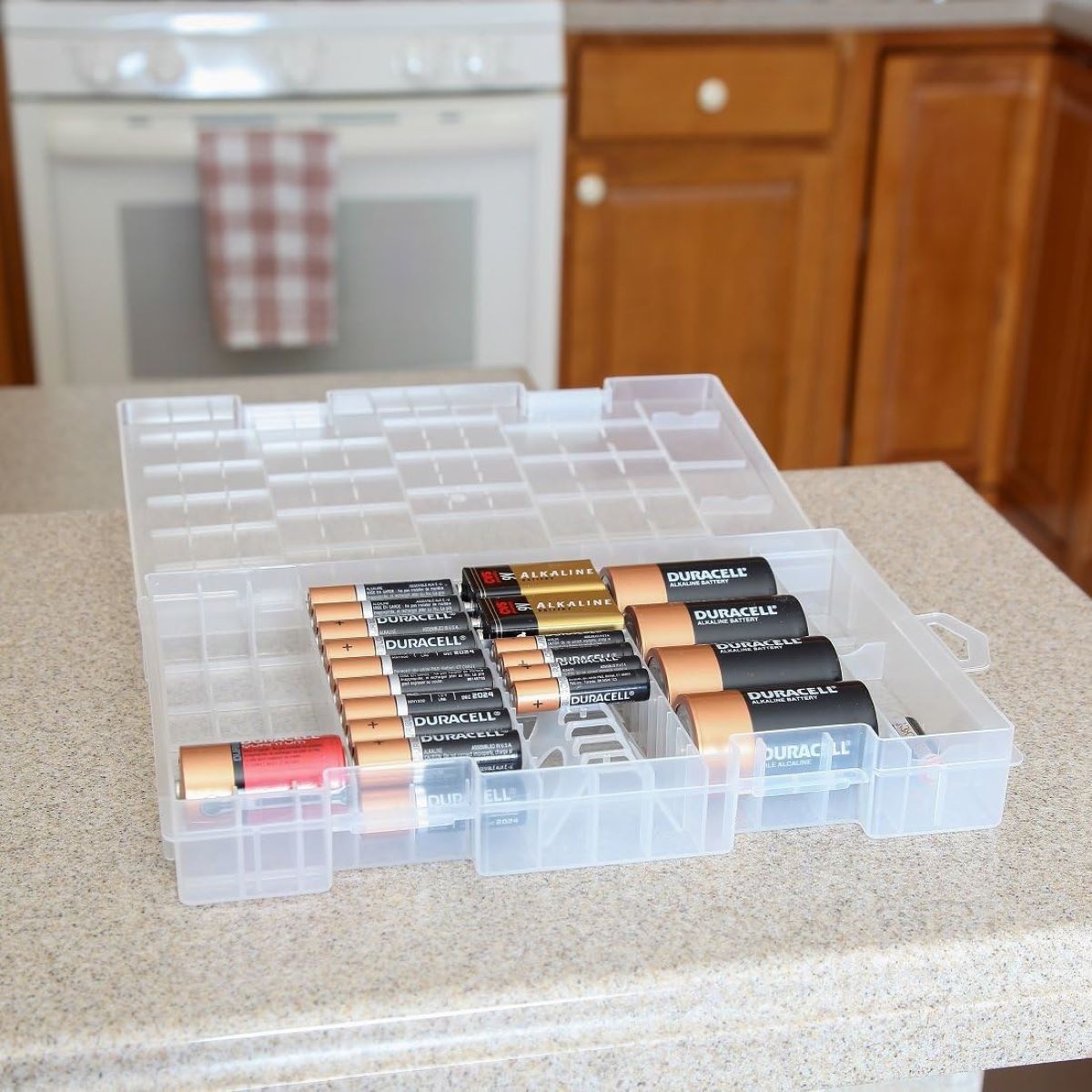

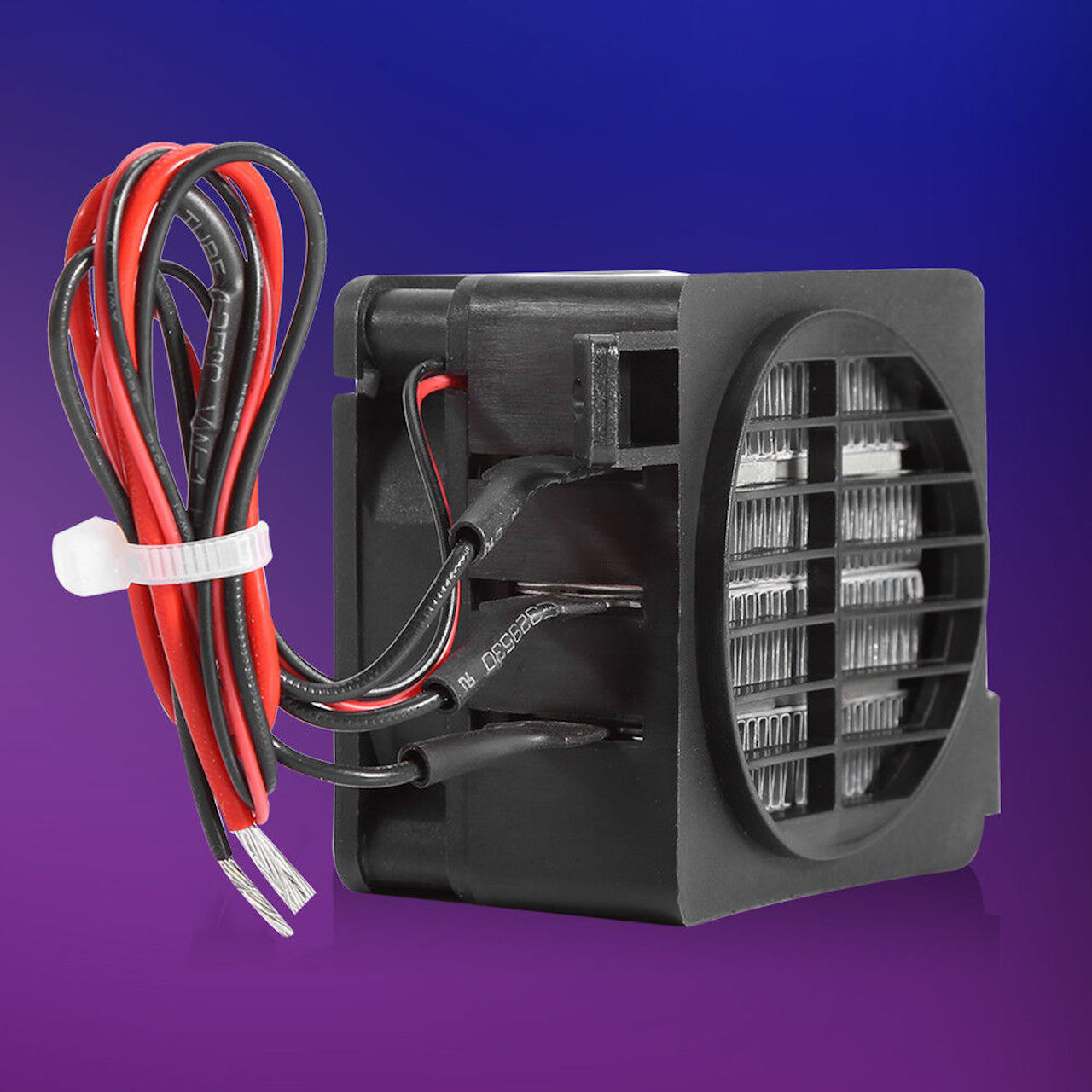




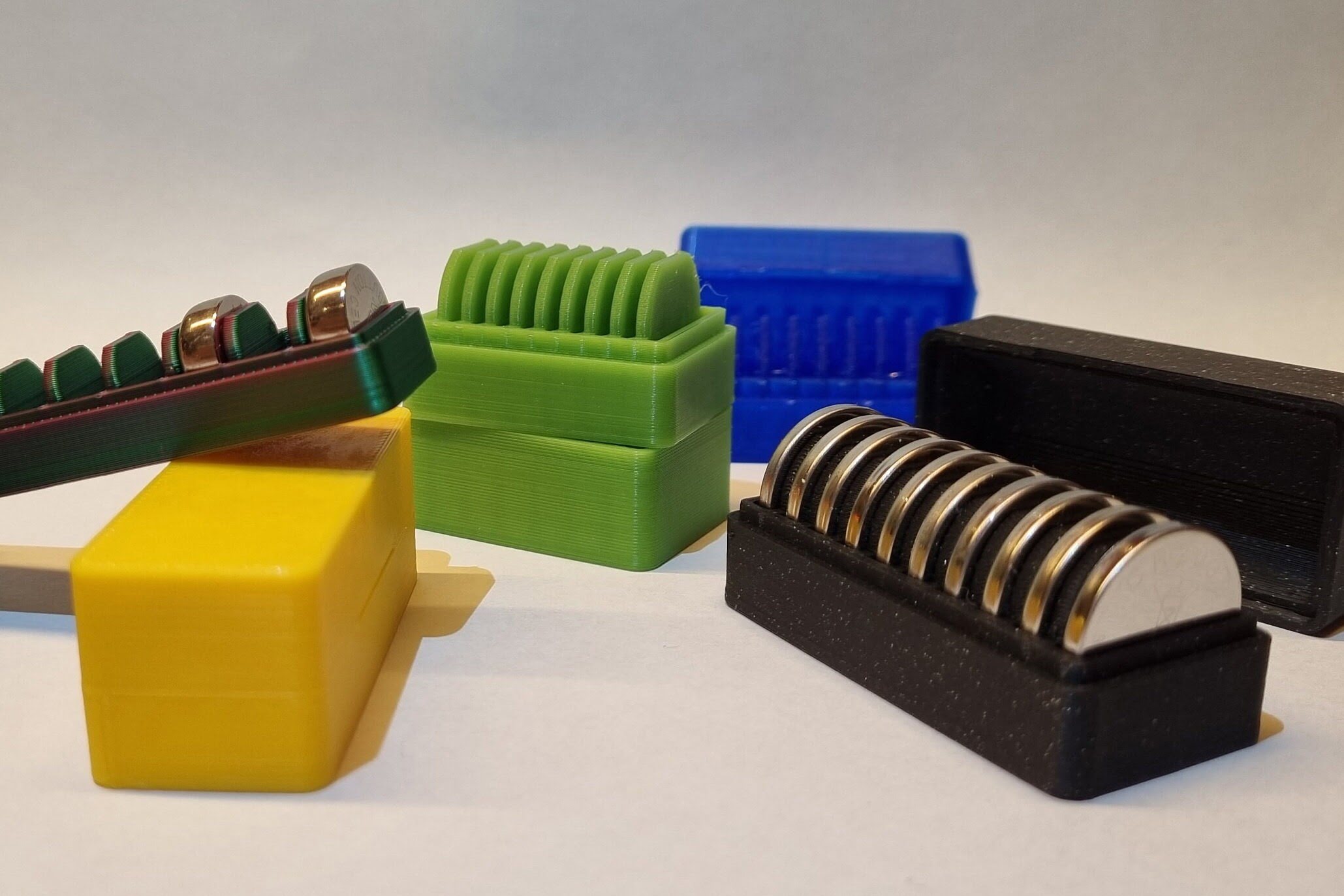
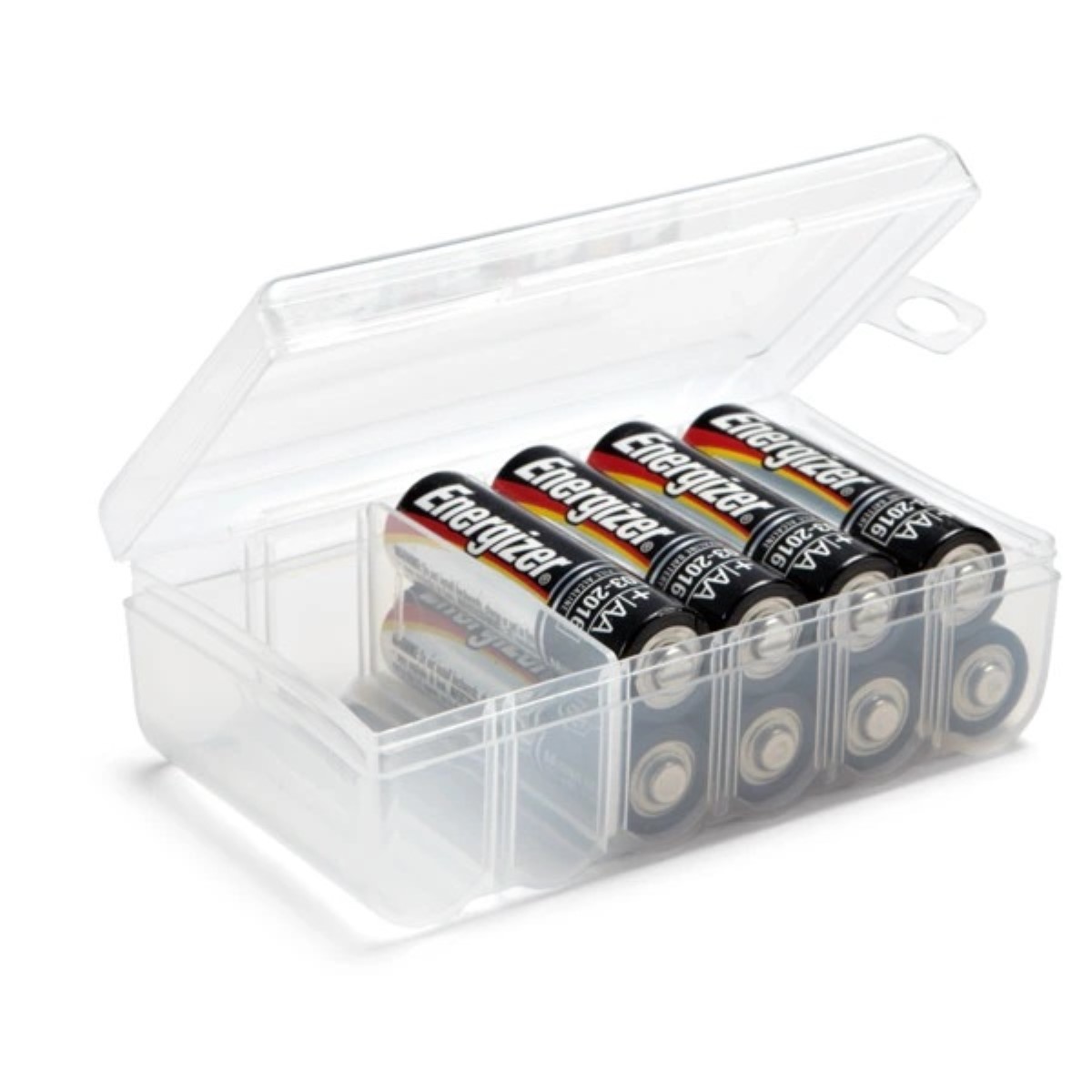

0 thoughts on “How To Store Car Batteries”